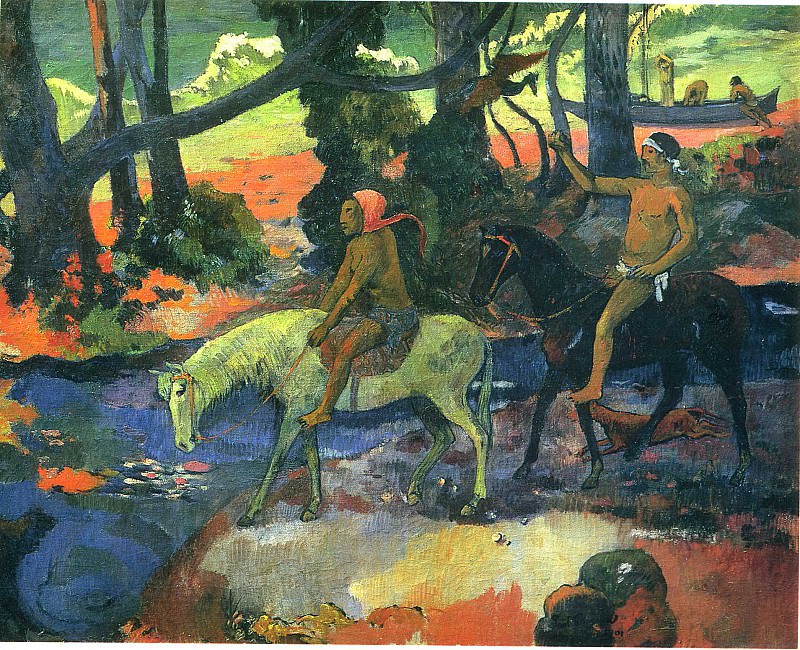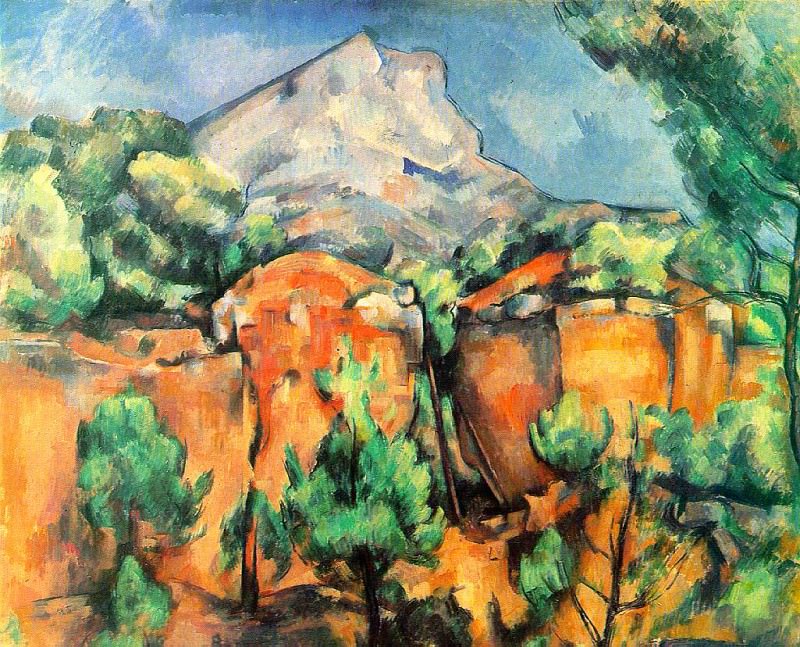Édouard Manet: A Pioneer of Modern Art
Early Life and Background
Édouard Manet, born on January 23, 1832, in Paris, was destined to revolutionize the art world. Coming from an affluent family, Manet was exposed to the arts and culture from a young age. His father, Auguste Manet, was a high-ranking judge, while his mother, Eugénie-Desirée Fournier, was the daughter of a diplomat. Despite his parents' aspirations for him to pursue a respectable career in law, Manet's passion for art was undeniable.
Artistic Beginnings and Influences
Manet's formal education in art began under the tutelage of Thomas Couture, a well-known academic painter. However, Manet was more captivated by the works of the Old Masters he encountered during his travels to Italy, the Netherlands, and Germany. The influence of Velázquez, Goya, and Hals is evident in his early works. Unlike his contemporaries who adhered to the traditional methods of the École des Beaux-Arts, Manet sought to break away from these conventions and create something truly unique.
The Salon des Refusés and Controversy
In 1863, Manet's painting, "Le Déjeuner sur l'Herbe" (Luncheon on the Grass), was rejected by the official Paris Salon. This rejection, along with numerous others, led to the establishment of the Salon des Refusés (Salon of the Refused), where artists whose works were not accepted by the official Salon could exhibit their creations. Manet's "Le Déjeuner sur l'Herbe" caused a scandal due to its depiction of a nude woman casually picnicking with two fully dressed men. The painting defied traditional representations of the nude and challenged the norms of artistic subject matter.
The Evolution of Style
Manet's style evolved significantly over the years. His early works, characterized by their dark palettes and meticulous detail, gave way to brighter, more spontaneous compositions. His brushwork became looser, and he began to incorporate elements of Japanese art, which was gaining popularity in Europe at the time. This shift is evident in works like "Olympia" (1863), another controversial piece depicting a reclining nude woman gazing directly at the viewer. "Olympia" was both criticized and celebrated for its boldness and modernity.
Impressionism and Beyond
Although Manet is often associated with the Impressionists, he never fully embraced the movement. While he shared their interest in contemporary subjects and loose brushwork, he maintained a commitment to traditional techniques and studio-based painting. Nevertheless, Manet played a crucial role in the development of Impressionism by providing a bridge between the academic traditions of the past and the innovative approaches of the future.
One of Manet's most celebrated works from this period is "A Bar at the Folies-Bergère" (1882). This painting captures the bustling atmosphere of a Parisian café-concert, with a barmaid standing behind a marble counter. The mirror behind her reflects the lively crowd, creating a complex interplay of perspectives and inviting viewers to contemplate the nature of reality and illusion.
Portraiture and Social Commentary
Manet was also a master of portraiture, capturing the essence of his subjects with remarkable insight and sensitivity. His portraits often convey a sense of immediacy and intimacy, as seen in "Portrait of Émile Zola" (1868) and "The Railway" (1873). These works not only depict the physical appearance of the sitters but also offer glimpses into their personalities and inner lives.
In addition to his portraits, Manet's art frequently addressed social and political themes. "The Execution of Emperor Maximilian" (1868) is a poignant commentary on the political turmoil of the time, depicting the execution of the ill-fated Mexican ruler installed by Napoleon III. Through this and other works, Manet expressed his disillusionment with the political establishment and his empathy for the plight of the oppressed.
Late Years and Legacy
In his later years, Manet's health began to decline due to complications from syphilis. Despite his physical suffering, he continued to create art with unwavering dedication. His final works, such as the delicate watercolors and pastels of flowers and fruits, exude a sense of serenity and introspection.
Édouard Manet passed away on April 30, 1883, but his influence on the art world endures. His fearless experimentation and willingness to challenge conventions paved the way for future generations of artists. Manet's work bridged the gap between Realism and Impressionism, and his innovative approach to composition, color, and subject matter continues to inspire and captivate audiences to this day.
The Continuing Impact of Manet's Work
The impact of Édouard Manet's work extends far beyond his lifetime. His approach to painting not only influenced his contemporaries but also left an indelible mark on the course of art history. Manet's willingness to confront societal norms and depict modern life in all its complexity resonated with artists who sought to break free from traditional constraints.
Manet's technique, characterized by bold brushwork and a keen eye for detail, laid the groundwork for the development of modern art movements. His use of light and shadow, coupled with a vibrant color palette, inspired the Impressionists to explore new ways of capturing the fleeting effects of light and atmosphere. Artists such as Claude Monet, Edgar Degas, and Pierre-Auguste Renoir drew inspiration from Manet's work, incorporating his innovative techniques into their own paintings.
Manet's Influence on Modern Art Movements
The legacy of Manet's work can be seen in the evolution of various modern art movements. The Post-Impressionists, including Vincent van Gogh and Paul Cézanne, built upon Manet's foundations by further exploring color, form, and texture. Van Gogh, in particular, admired Manet's ability to infuse his subjects with emotion and vitality, and this admiration is evident in Van Gogh's own expressive use of color and brushwork.
The Symbolists, too, found inspiration in Manet's ability to convey complex psychological states through his art. His portrayal of introspective figures and evocative settings resonated with artists like Gustave Moreau and Odilon Redon, who sought to capture the inner workings of the human mind.
Manet in the Context of Art History
Manet's contributions to art history cannot be overstated. His work challenged the conventions of the time and opened up new possibilities for artistic expression. By bridging the gap between Realism and Impressionism, Manet played a pivotal role in the transition from traditional to modern art.
Art historians and critics continue to study Manet's oeuvre, uncovering new layers of meaning and significance in his paintings. Exhibitions dedicated to his work attract large audiences, attesting to his enduring appeal and relevance. Manet's ability to capture the essence of his subjects, whether through a simple still life or a complex multi-figure composition, speaks to the universal themes of human experience.
Manet's Enduring Legacy
Édouard Manet's legacy is one of innovation, courage, and artistic excellence. His willingness to challenge the status quo and push the boundaries of artistic convention paved the way for generations of artists to come. Manet's work remains a testament to the power of art to provoke thought, evoke emotion, and inspire change.
In the contemporary art world, Manet's influence can still be felt. Artists continue to draw inspiration from his bold compositions, masterful use of color, and keen observations of modern life. Museums and galleries around the world proudly display Manet's works, ensuring that his contributions to art will be remembered and celebrated for generations to come.
Conclusion: The Timeless Appeal of Édouard Manet
Édouard Manet's journey as an artist was marked by a relentless pursuit of innovation and a fearless challenge to artistic conventions. From his early struggles for acceptance to his eventual recognition as a pioneering force in modern art, Manet's legacy is a testament to the transformative power of creativity.
Through his groundbreaking works, Manet bridged the gap between the traditional and the modern, leaving an indelible mark on the history of art. His ability to capture the essence of contemporary life, combined with his technical mastery and willingness to experiment, ensures that his art remains relevant and impactful.
Manet's influence can be seen in the works of countless artists who followed in his footsteps, each building upon his foundations and pushing the boundaries of artistic expression even further. His legacy is not confined to the past but continues to shape the future of art, inspiring new generations to explore, innovate, and challenge the norms.
In celebrating Édouard Manet, we celebrate the spirit of artistic rebellion, the pursuit of excellence, and the enduring power of art to inspire, provoke, and transform. His work stands as a timeless reminder that true innovation requires courage, and that the impact of a visionary artist can resonate across centuries, leaving an everlasting imprint on the world of art.



